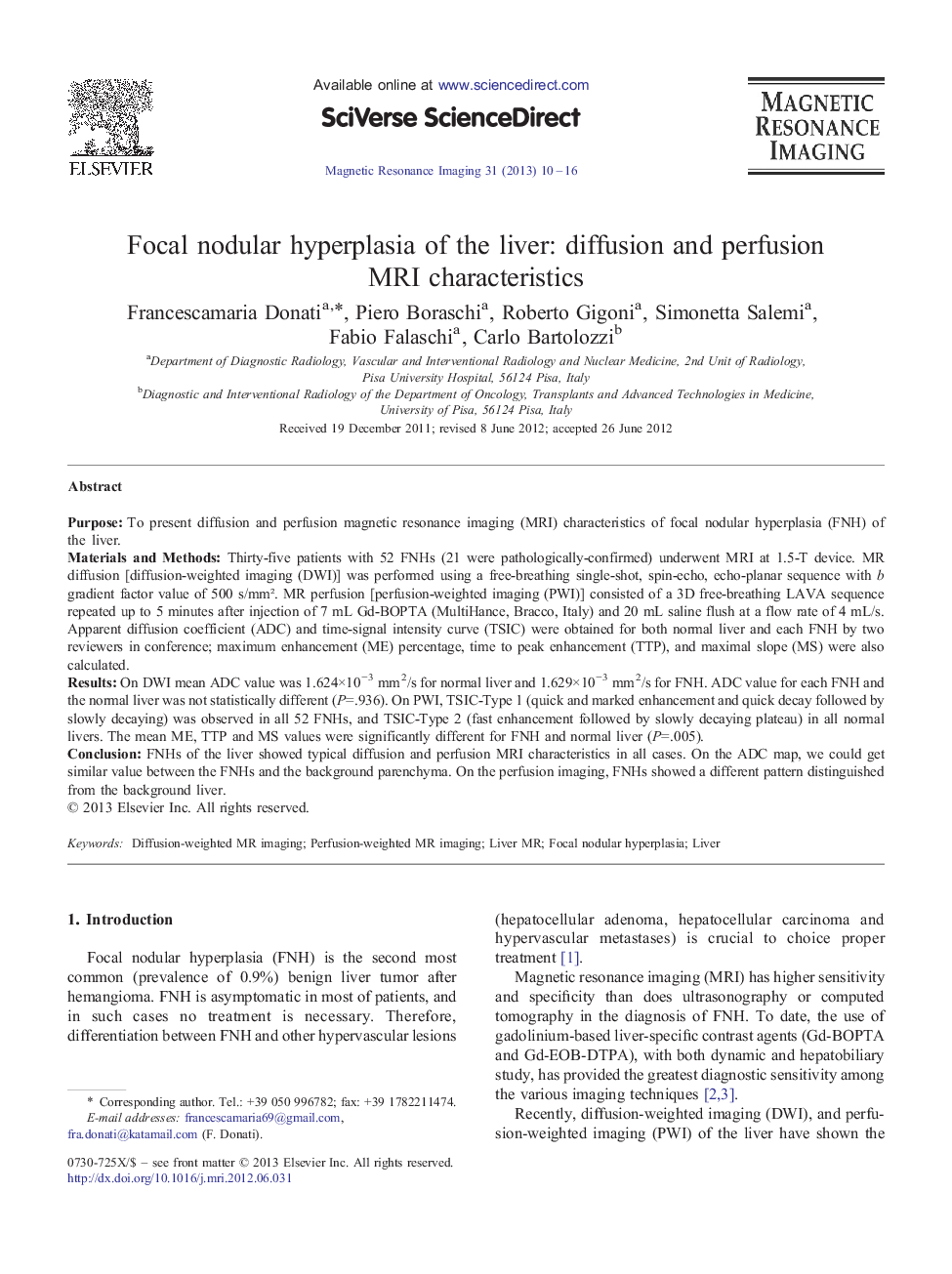| Article ID | Journal | Published Year | Pages | File Type |
|---|---|---|---|---|
| 1806742 | Magnetic Resonance Imaging | 2013 | 7 Pages |
PurposeTo present diffusion and perfusion magnetic resonance imaging (MRI) characteristics of focal nodular hyperplasia (FNH) of the liver.Materials and MethodsThirty-five patients with 52 FNHs (21 were pathologically-confirmed) underwent MRI at 1.5-T device. MR diffusion [diffusion-weighted imaging (DWI)] was performed using a free-breathing single-shot, spin-echo, echo-planar sequence with b gradient factor value of 500 s/mm². MR perfusion [perfusion-weighted imaging (PWI)] consisted of a 3D free-breathing LAVA sequence repeated up to 5 minutes after injection of 7 mL Gd-BOPTA (MultiHance, Bracco, Italy) and 20 mL saline flush at a flow rate of 4 mL/s. Apparent diffusion coefficient (ADC) and time-signal intensity curve (TSIC) were obtained for both normal liver and each FNH by two reviewers in conference; maximum enhancement (ME) percentage, time to peak enhancement (TTP), and maximal slope (MS) were also calculated.ResultsOn DWI mean ADC value was 1.624×10− 3 mm2/s for normal liver and 1.629×10− 3 mm2/s for FNH. ADC value for each FNH and the normal liver was not statistically different (P= .936). On PWI, TSIC-Type 1 (quick and marked enhancement and quick decay followed by slowly decaying) was observed in all 52 FNHs, and TSIC-Type 2 (fast enhancement followed by slowly decaying plateau) in all normal livers. The mean ME, TTP and MS values were significantly different for FNH and normal liver (P= .005).ConclusionFNHs of the liver showed typical diffusion and perfusion MRI characteristics in all cases. On the ADC map, we could get similar value between the FNHs and the background parenchyma. On the perfusion imaging, FNHs showed a different pattern distinguished from the background liver.
